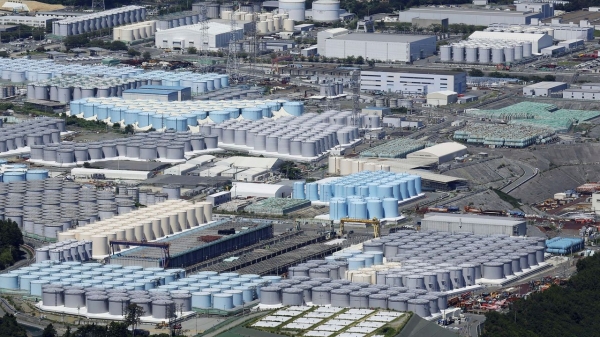
The discharge of radioactive water from the Fukushima Daiichi Nuclear Power Plant is arousing controversy worldwide. In 2021, the Japanese cabinet approved the release of nuclear-treated water into the Pacific Ocean over the course of 30 years. Opinions are divided among many organizations and scholars over the move into a position that the overall effect is insignificant and a position that the move will be harmful to the human body. It is important to face the problem based on accurate facts and reasonable grounds. The following claims are examined from the perspective of various organizations, including various institutions, and researchers.
The volume of nuclear-treated water is large. Water treatment began in March 2013 as the Advanced Liquid Processing System (ALPS) became operable. ALPS was designed to remove radionuclides. The initial step of the treatment procedure involved introducing 400 metric tons of water daily into the compromised reactor structures to mitigate the effects of nuclear meltdown. Simultaneously, approximately 400 additional metric tons of groundwater infiltrated the building basements, becoming contaminated with radioactivity. Consequently, a total of 800 tons of water were extracted daily, undergoing processes to eliminate cesium and reduce salinity. Of the extracted water, half was reutilized for reactor cooling, while the remaining 400 tons were allocated to storage tanks. By 2020, the volume of resulting contaminated water had decreased to 170 metric tons daily. Since the 2011 Fukushima Daiichi nuclear disaster, the nuclear plant has accumulated 1.25 million tons of wastewater, stored in 1,061 tanks, as of March 2021 according to The Japan Times.
Japan put forth its proposal to release water from the Fukushima plant in 2019 and approved the plan two years later. This plan stirred debates domestically and internationally, with the Chinese government officials and numerous South Korean residents expressing concerns about its safety. Rafael Grossi, the Director General of the International Atomic Energy Agency (IAEA), stated that if Japan proceeds with the planned discharge, the IAEA will establish a presence in Fukushima to continually assess the water's safety. Subsequently, an IAEA task force conducted multiple evaluations of Japan's progress in treating the water. The final report from the nuclear authority concluded that once released, the treated water would have an insignificant radiological impact on both people and the environment. IAEA declared in July 2023 that the Japanese government’s plan had met the agency’s safety standards.
The international academic journal Nature reported that “Japan plans to release Fukushima contaminated water stored in tanks into the sea for the next 30 years, starting this year, despite concerns from various countries and organizations.” Japan began discharging contaminated water from Fukushima on Aug. 24. The Tokyo Electric Power Company (TEPCO) plans to dilute 7,800 tons of contaminated water with seawater for 17 days. Currently, about 1.34 million tons of contaminated water are stored in tanks in nuclear power plants, and 100 tons are newly generated every day because radioactive materials inside the reactor are not removed. It is estimated that it will take 30 years or more to discharge all the contaminated water.
TEPCO purifies water contaminated with radioactive materials through ALPS and dilutes it with seawater to lower the concentration of tritium and carbon-14 that cannot be filtered through the facility before discharging it. TEPCO claims that the concentration of tritium in the contaminated water treated in this way is up to 1,500 becquerels per liter, which is six times lower than the World Health Organization (WHO) standard for drinking water. In opposition, critics say that the Japanese government and TEPCO have not been transparent enough about the treatment process or the planned release.
The reactions overseas are not unified. On Aug. 24, the United States Department of State reaffirmed support for Japan’s release of treated water. In contrast, China opposes the release and took the measure of blocking all seafood imports from Japan. While the Korean government tacitly agreed and a portion of Koreans and Japanese citizens agreed, another significant portion from both nations raised doubts about the reliability of TEPCO and opposed the discharge.


